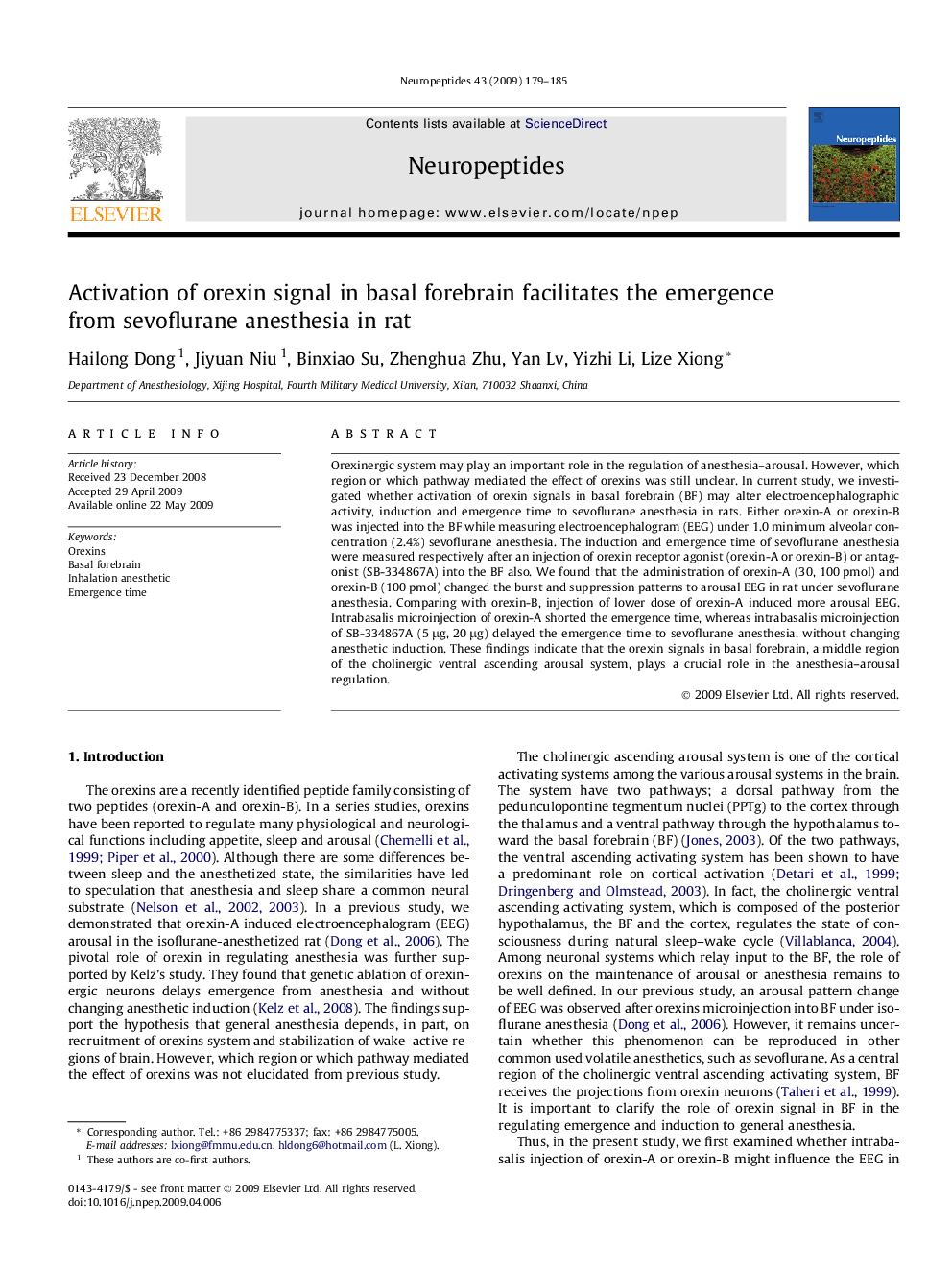| Article ID | Journal | Published Year | Pages | File Type |
|---|---|---|---|---|
| 2808539 | Neuropeptides | 2009 | 7 Pages |
Orexinergic system may play an important role in the regulation of anesthesia–arousal. However, which region or which pathway mediated the effect of orexins was still unclear. In current study, we investigated whether activation of orexin signals in basal forebrain (BF) may alter electroencephalographic activity, induction and emergence time to sevoflurane anesthesia in rats. Either orexin-A or orexin-B was injected into the BF while measuring electroencephalogram (EEG) under 1.0 minimum alveolar concentration (2.4%) sevoflurane anesthesia. The induction and emergence time of sevoflurane anesthesia were measured respectively after an injection of orexin receptor agonist (orexin-A or orexin-B) or antagonist (SB-334867A) into the BF also. We found that the administration of orexin-A (30, 100 pmol) and orexin-B (100 pmol) changed the burst and suppression patterns to arousal EEG in rat under sevoflurane anesthesia. Comparing with orexin-B, injection of lower dose of orexin-A induced more arousal EEG. Intrabasalis microinjection of orexin-A shorted the emergence time, whereas intrabasalis microinjection of SB-334867A (5 μg, 20 μg) delayed the emergence time to sevoflurane anesthesia, without changing anesthetic induction. These findings indicate that the orexin signals in basal forebrain, a middle region of the cholinergic ventral ascending arousal system, plays a crucial role in the anesthesia–arousal regulation.
